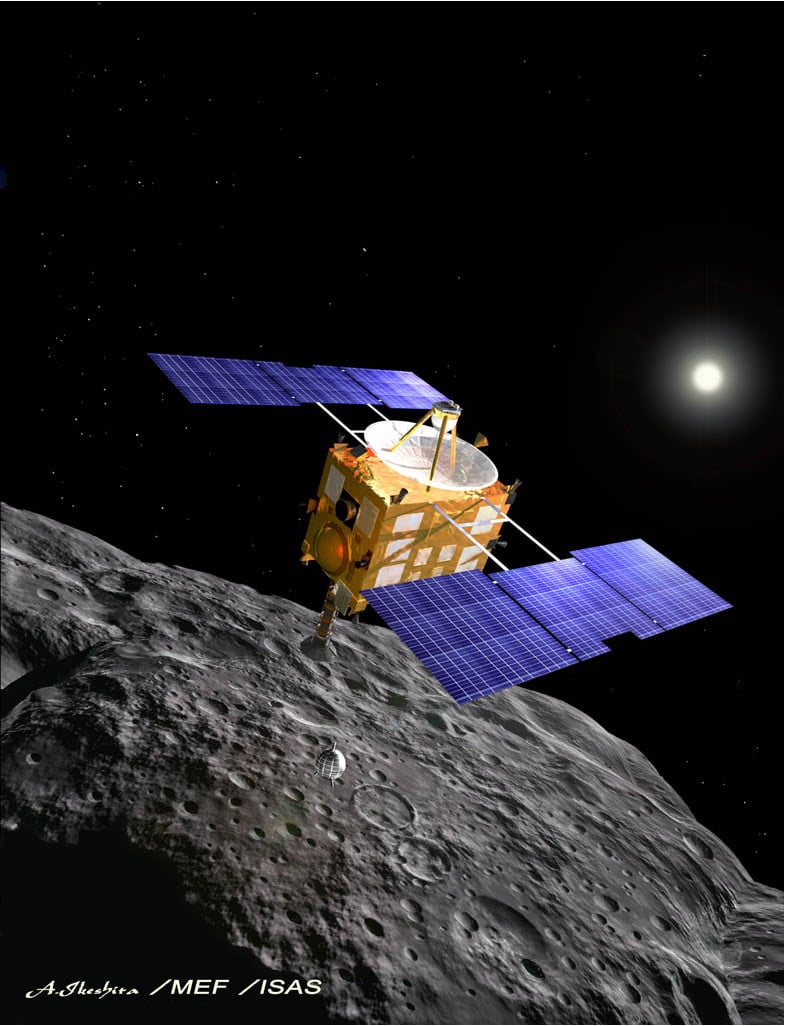[/caption]
No visible material from
asteroid
Itokawa was found inside the second compartment of a canister returned to Earth by the Hayabusa spacecraft. However, JAXA also announced that more micron-sized grains have been found in the first compartment, opened earlier this year. Reportedly, the first compartment has about 1,500 tiny particles, however some might be aluminum particles from the container itself. But about 20 grains were rocky or mineral-based. However, according to the Daily Yomiuri Online, no visible material was inside the second chamber, although further investigations of the second compartment will be done with a special microscope.
Hayabusa attempted to land on Itokawa twice. The cylindrical canister was divided into two chambers, and the second chamber was to contain material collected during the spacecraft's first landing. JAXA officials expect the second compartment to contain more microscopic particles from Itokawa since the first landing was longer than the second.
As far as the particles from the first chamber, several have been observed with an electron microscope, and according to
UmannedSpaceflight.com
, the "rocky" ones are 30 microns in size, with several larger ones are about 100 microns.
JAXA hopes to provide more insight on the nature of the grains by the end of the year.
 Universe Today
Universe Today
